[No.067] Weekly Kastori
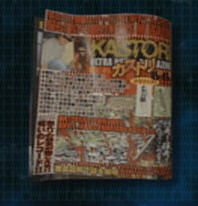
The Weekly Kastori, a magazine filled with pointless things and juicy news stories from around the world. It feels somehow exactly like a real magazine... The name originates from the fact that silly, pointless or vulgar magazines were once generally referred to as kasutori magazines. The magazine is titled almost as though directly proclaiming that it is a load of rubbish. Its catchphrase is also: "Overflowing with shocking, utterly pointless news! The exhaustive news magazine that will melt your brain!"
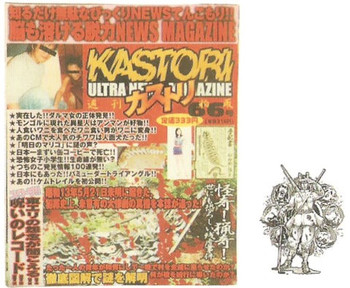
The 24 July 2003 special issue focuses on the "XX Village massacre of 33" that is said to have taken place in 1938. The article picks up on the curiosity of a young man who is said to have suddenly run amok in the tragic village, massacring all of its inhabitants. It is obviously based on the "Tsuyama massacre of 30" that actually occurred in 1938 in Okayama. This copy of Weekly Kastori is found in a cabinet in the break room at the ore plant in Janokubi Valley, though as you can see from the date it was brought there after the mine's closure. It was likely brought by someone who became curious and came to explore Hanuda Village (Kyoya himself visits the village after becoming interested in getting a peek at the 'massacred village'). It seems that Kyoya's appearance at the time of the genocide ending is strongly influenced by the perpetrator of the massacre's characteristic features. The murderer of legend is said to wear a school uniform with gaiters, two torches on his head, a bike lamp on his arm, and carry a hunting rifle and Japanese sword in each hand. Kyoya holds the Uryen in one hand and a katana in the other, also with two hunting rifles and a huge number of hand grenades, looking no less strange. Was Kyoya aware when destroying the Shibito to fulfil his promise to Miyako that he was merging with the one from the legend?
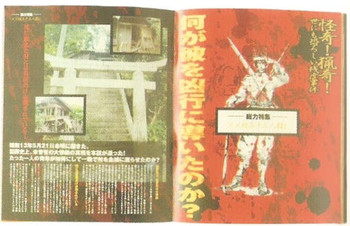

[No.068] Shiro Miyata's Driver's License
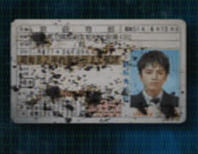
Lying on the ground near the area where Mina's body was buried. The way in which it is left makes it appear to be decisive proof in a way that he was disposing of a body, and perhaps that even the cool Miyata was in a fluster at the time. The license is also gold, the mark of an excellent driver, making him seem calm and careful...

[No.069] Naoko Mihama's CV
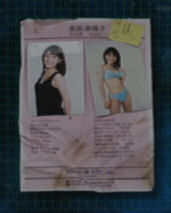
This appears to have been submitted when Mihama was hired as a reporter for the occult TV show Darkness Japan. This is an item that, along with [No.015] TV Show Proposal, left at the plant in Janokubi Valley, shows that the TV crew that should have been accompanying Mihama arrived in the area. According to her CV her birthday is 23 August 1976, but as previously noted, [No.061] Naoko Mihama's Graduation Anthology presents the possibility that she was born in 1974. There is a strong possibility that Mihama, fixated obsessively with youth and appearance, lied about her age by two years... There is also a note paperclipped to the top right of the document, which reads: "No. 11 - dirty job, 23/7 OK?" This seems to mean that Mihama was entry number 11 at her audition, and a preliminary meeting for the programme was held on 23 July, and asks if an outdoor job that may involve getting dirty is okay.
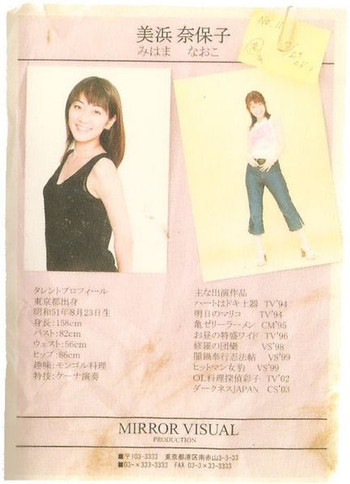

[No.070] Akira Shimura's Old Photo
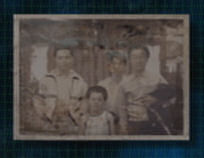
A photograph of Akira Shimura, Koichi Shimura, Omito Takeuchi and Tamon Takeuchi. This photo shows the close relationship between the Takeuchi and Shimura families. It was likely that Koichi Shimura learned some of what he knew from Omito Takeuchi, who had a certain degree of knowledge about the Kajiro family's secrets as a local historian.

[No.071] Marks on Railing
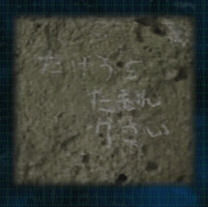
The handwriting of a seven-year-old Tamon Takeuchi. Since Tamon was born in 1969 and was seven at the time, that means that it was scribbled in 1976, the very year his parents fell victim to a landslide. It is also what leads Tamon to tell Yoriko that he actually lived in the village as a child.

[No.072] Scribble on Table
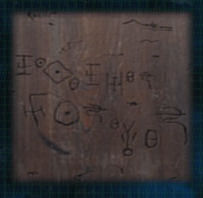
Each member of the Maeda family turns into a Shibito. Harumi catches a glimpse of how the Shibito Maedas live, reading the daughter Tomoko's scribble of "together forever and ever" on the living room table in Shibito characters. At this stage Tomoko, famous from the scene at the church in Irazu, though once rejected by her parents now lives happily with them. This is evidently how she feels about it.

The Weekly Kastori, a magazine filled with pointless things and juicy news stories from around the world. It feels somehow exactly like a real magazine... The name originates from the fact that silly, pointless or vulgar magazines were once generally referred to as kasutori magazines. The magazine is titled almost as though directly proclaiming that it is a load of rubbish. Its catchphrase is also: "Overflowing with shocking, utterly pointless news! The exhaustive news magazine that will melt your brain!"

The 24 July 2003 special issue focuses on the "XX Village massacre of 33" that is said to have taken place in 1938. The article picks up on the curiosity of a young man who is said to have suddenly run amok in the tragic village, massacring all of its inhabitants. It is obviously based on the "Tsuyama massacre of 30" that actually occurred in 1938 in Okayama. This copy of Weekly Kastori is found in a cabinet in the break room at the ore plant in Janokubi Valley, though as you can see from the date it was brought there after the mine's closure. It was likely brought by someone who became curious and came to explore Hanuda Village (Kyoya himself visits the village after becoming interested in getting a peek at the 'massacred village'). It seems that Kyoya's appearance at the time of the genocide ending is strongly influenced by the perpetrator of the massacre's characteristic features. The murderer of legend is said to wear a school uniform with gaiters, two torches on his head, a bike lamp on his arm, and carry a hunting rifle and Japanese sword in each hand. Kyoya holds the Uryen in one hand and a katana in the other, also with two hunting rifles and a huge number of hand grenades, looking no less strange. Was Kyoya aware when destroying the Shibito to fulfil his promise to Miyako that he was merging with the one from the legend?


[No.068] Shiro Miyata's Driver's License

Lying on the ground near the area where Mina's body was buried. The way in which it is left makes it appear to be decisive proof in a way that he was disposing of a body, and perhaps that even the cool Miyata was in a fluster at the time. The license is also gold, the mark of an excellent driver, making him seem calm and careful...

[No.069] Naoko Mihama's CV

This appears to have been submitted when Mihama was hired as a reporter for the occult TV show Darkness Japan. This is an item that, along with [No.015] TV Show Proposal, left at the plant in Janokubi Valley, shows that the TV crew that should have been accompanying Mihama arrived in the area. According to her CV her birthday is 23 August 1976, but as previously noted, [No.061] Naoko Mihama's Graduation Anthology presents the possibility that she was born in 1974. There is a strong possibility that Mihama, fixated obsessively with youth and appearance, lied about her age by two years... There is also a note paperclipped to the top right of the document, which reads: "No. 11 - dirty job, 23/7 OK?" This seems to mean that Mihama was entry number 11 at her audition, and a preliminary meeting for the programme was held on 23 July, and asks if an outdoor job that may involve getting dirty is okay.


[No.070] Akira Shimura's Old Photo

A photograph of Akira Shimura, Koichi Shimura, Omito Takeuchi and Tamon Takeuchi. This photo shows the close relationship between the Takeuchi and Shimura families. It was likely that Koichi Shimura learned some of what he knew from Omito Takeuchi, who had a certain degree of knowledge about the Kajiro family's secrets as a local historian.

[No.071] Marks on Railing

The handwriting of a seven-year-old Tamon Takeuchi. Since Tamon was born in 1969 and was seven at the time, that means that it was scribbled in 1976, the very year his parents fell victim to a landslide. It is also what leads Tamon to tell Yoriko that he actually lived in the village as a child.

[No.072] Scribble on Table

Each member of the Maeda family turns into a Shibito. Harumi catches a glimpse of how the Shibito Maedas live, reading the daughter Tomoko's scribble of "together forever and ever" on the living room table in Shibito characters. At this stage Tomoko, famous from the scene at the church in Irazu, though once rejected by her parents now lives happily with them. This is evidently how she feels about it.

English Translation by Chelsea

